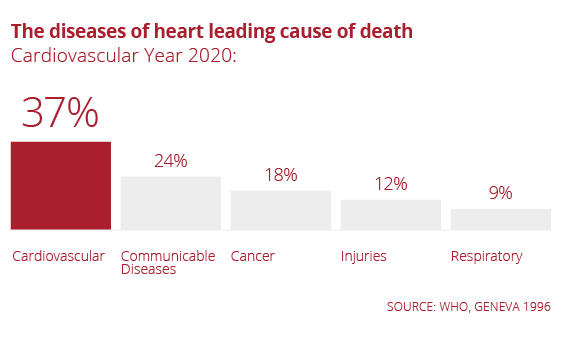Cardiovascular diseases, heart attacks and strokes are the most common causes of death in the world. It is estimated that they will remain so for the next years (2010-2020).
Non-modifiable risk factors for these diseases are:
- Sex
- Age
- Hereditary factors
Modifiable factors are:
- High cholesterol
- Elevated levels of low-density lipoprotein (LDL)
- Reduced levels of high-density lipoprotein (HDL)
- Elevated triglyceride levels
- Diabetes
- Smoking
- Lifestyle
- Level of physical activity
- Overweight
- Inadequate diet

LIPOTEST meal joins the pool of diagnostic tests such as oral glucose tolerance test or exercise tests.
Currently, the primary preventive and therapeutic intervention is aimed at lowering cholesterol levels.
In the next section we will explain why the Oral Fat Tolerance Test is so important.
VIDEO: Triglycerides and the risk of cardiovascular disease >>watch the video
Currently, in order to reduce cardiovascular risk, actions are taken to reduce total cholesterol and low-density cholesterol (LDL) fractions.
Currently available clinical trials show that drug therapy lowering elevated total and LDL cholesterol levels reduces cardiovascular and total mortality by 30%-40%.

This means that most patients, despite receiving the best available drug therapy, still have an increased risk of cardiovascular disease (heart attack and stroke) due to the so-called residual risk.
Currently, elevated plasma triglyceride levels are an independent risk factor for cardiovascular diseases, as proven by many epidemiological studies.